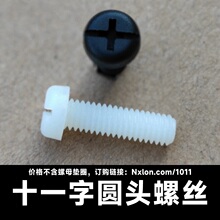Flat-head Blind Rivet Nut
©Nxlon.com D/T:

The flat-head blind rivet nut is a kind of fastener commonly used for the connection of thin plates. The following is a detailed introduction to the flat-head blind rivet nut:
Definition and Structure of the Flat-head Blind Rivet Nut
The flat-head blind rivet nut is a columnar nut with internal threads. One end is flat, and the other end has a flange or a bell mouth for riveting. There are usually various forms of grooves or teeth on its column body to increase the friction force and anti-loosening performance after riveting. The internal threads are used to cooperate with bolts or screws to achieve the connection between components.
Features of the Flat-head Blind Rivet Nut
Good Fastening Performance: Connected to the thin plate by riveting, it can provide reliable fastening force to prevent the nut from loosening or falling off.
Good Aesthetic Appearance: The flat-head design makes its surface relatively flat after installation, flush with the connected thin plate, having a good appearance effect, and is suitable for occasions with high requirements for appearance.
Easy Installation: Just use simple riveting tools to rivet the blind rivet nut onto the thin plate. There is no need to carry out complex thread processing on the thin plate, which improves the installation efficiency.
Can Bear Large Tensile Force: Due to the tight connection with the thin plate after riveting, it can bear large tensile force and shear force, and is suitable for connection parts that need to bear a certain load.
Manufacturing Standards of the Flat-head Blind Rivet Nut
Common national standards include GB/T 17880.1 - 1999 "Flat-head Blind Rivet Nuts", etc., which have made detailed regulations on the dimensions, tolerances, materials, mechanical properties, and surface treatments of the flat-head blind rivet nuts. For example, it specifies the dimensional parameters such as the outer diameter, inner diameter, and height of blind rivet nuts of different specifications, as well as the mechanical property requirements such as the tensile strength and hardness of the materials.
Materials and Surface Treatments of the Flat-head Blind Rivet Nut
Commonly Used Materials: Generally, materials such as low-carbon steel, stainless steel, and aluminum alloy are used. The flat-head blind rivet nuts made of low-carbon steel have high strength and toughness and relatively low cost; those made of stainless steel have good corrosion resistance and are suitable for humid environments or environments with corrosive media; the blind rivet nuts made of aluminum alloy are light in weight and are suitable for occasions with requirements for weight, such as in the aerospace, electronic equipment, and other fields.
Surface Treatments: In order to improve the corrosion resistance and wear resistance of the flat-head blind rivet nuts, surface treatments are usually carried out. Common surface treatment methods include galvanizing, nickel plating, chrome plating, etc. These treatments can form a protective film on the surface of the nut to prevent oxidation and corrosion. In addition, for some occasions with special requirements, blackening treatment, phosphating treatment, etc. may also be adopted.
Application Fields of the Flat-head Blind Rivet Nut
Automobile Manufacturing: Used for the connection of thin plates in parts such as automobile bodies, interior parts, and engine compartments, such as the connection between the door interior panel and the door frame, and the connection of the automobile seat frame.
Electronic Equipment: It is often used in the assembly of the casings of electronic devices such as mobile phones, tablets, and laptops. It can achieve a reliable connection between the thin and light casings and the internal structural parts, while ensuring a flat and beautiful appearance.
Architectural Decoration: It can be used for the installation of building curtain walls, ceilings, furniture, etc., fixing the thin plate materials to the frame or base, providing a firm connection and maintaining a good decorative effect.
Home Appliances: Flat-head blind rivet nuts are also used in the assembly of the casings and the connection of the internal structures of home appliances such as refrigerators, washing machines, and air conditioners to ensure the structural stability and appearance quality of the products.
Marking Method of the Flat-head Blind Rivet Nut
The marking content includes information such as the product name, nominal diameter, nominal length, material, and surface treatment. For example, the marking "Blind Rivet Nut GB/T 17880.1 M6×10 - 10B Zn" indicates a flat-head blind rivet nut with a nominal diameter of 6mm, a nominal length of 10mm, a material of 10B steel, and a surface treatment of galvanizing.
Purchase Precautions for the Flat-head Blind Rivet Nut
Size Matching: According to the actual thickness of the thin plate used and the connection requirements, select a flat-head blind rivet nut of an appropriate specification to ensure that its outer diameter, inner diameter, and length match the installation part to ensure the riveting effect and connection strength.
Material Selection: Select a blind rivet nut of an appropriate material according to the usage environment and working conditions. For example, in a humid environment or an environment with corrosive media, a stainless steel blind rivet nut or a blind rivet nut with special anti-corrosion treatment should be selected; for parts that bear a large load, the strength and toughness of the material should be considered.
Quality Inspection: When purchasing, check the appearance quality of the blind rivet nut, which should have no defects such as cracks, burrs, and deformations. At the same time, pay attention to checking the accuracy and smoothness of its threads to ensure good cooperation with bolts or screws.
Installation and Maintenance of the Flat-head Blind Rivet Nut
Installation: When installing the flat-head blind rivet nut, first, a suitable installation hole needs to be processed on the thin plate. Then, put the blind rivet nut into the hole and use special riveting tools (such as pneumatic rivet guns, hydraulic riveting machines, etc.) to rivet the blind rivet nut. During the riveting process, ensure that the pressure and stroke of the riveting tool are appropriate, so that the flange or bell mouth of the blind rivet nut can be fully deformed and closely combined with the thin plate.
Maintenance: Regularly check the connection condition of the blind rivet nut to see if there are problems such as looseness, deformation, or corrosion. If the blind rivet nut is found to be damaged or the connection is not firm, it should be replaced in a timely manner. When repairing or maintaining the equipment or product, also pay attention to checking and maintaining the blind rivet nut to ensure the reliability of the entire connection system.
尼小龙塑料螺丝-塑料螺母-尼龙垫圈-塑料铆钉
塑料芭蕾铆钉-尼龙宝塔卡扣
订购链接:Nxlon.com/1026
国标塑料铆钉芭蕾铆钉材质:POM、PC等;颜色:白色、黑色、透明;R型铆钉,芭蕾铆钉与宝塔铆钉起源于广东中山,它们都是一种简易铆接的塑料卡扣; 利用塑料的记忆性紧固两较薄的面板,铆定后可以再次取下,可重复使用。
R2040-塑料铆钉-尼龙铆钉
订购链接:Nxlon.com/2040
R2040-塑料铆钉-尼龙铆钉塑料铆钉-尼龙铆钉-汽车塑胶铆钉-尼小龙尼龙铆钉R2.6R3.5R4R5塑胶柳钉子母铆钉快捷紧固件塑料卡扣。
内3.2外7.0黑色塑料直通柱ABS隔离柱
订购链接:Nxlon.com/1013
国标圆形直通柱垫片垫圈材质:塑料ABS树脂;内径:M3系列=3.2mm,M4系列内径=4.2mm;外径:M3M4系列外径都是7mm;高度:2到15mm
塑料R型线夹圆形线卡拱形压线板
订购链接:Nxlon.com/1053
塑料R型线夹圆形线卡拱形压线板,材质:PP塑料、尼龙等。紧固孔:M4。塑料R型线夹圆形线卡拱形压线板,材质:PP塑料、尼龙等。紧固孔:M4。
R3045-塑料铆钉-尼龙铆钉
订购链接:Nxlon.com/3045
R3045-塑料铆钉-尼龙铆钉塑料铆钉-尼龙铆钉-汽车塑胶铆钉-尼小龙尼龙铆钉R2.6R3.5R4R5塑胶柳钉子母铆钉快捷紧固件塑料卡扣。









